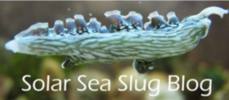

Origin Myth, Part 1
Why does this page even exist? It started with the guy in the picture below, a Humboldt squid (Dosidicus gigas). More correctly, this story starts with the lack of them.
In 2012, I was lucky enough to be volunteering as a Visiting Scientist with Ocean Discovery Institute during their annual research/education trips to Bahia de los Angeles in Baja California. I had traveled to Bahia de los Angeles a few times with my friend and colleague Dr Drew Talley, and had spent about a week in the summer of 2011 with the Ocean Discovery Bahia Program as a Visiting Scientist. They are an amazing group, and I always come back from visits with them feeling energized about science and education. In 2012, I agreed to assemble a workshop on a subject in which neurobiology intersects marine biology. In previous years, the large Humboldt squid had been relatively plentiful, so it seemed like a perfect opportunity to demonstrate for the students the electrical properties of the giant axon and the role it plays in the behavior of the squid.
After many, many hours of preparation, including purchasing a SpikerBox to serve as an amplifier, getting some help from the departmental shop in building a portable, battery-powered stimulator, talking with resident experts about recording giant axons, and trying to think of every contingency that might come up when trying to perform electrophysiology in a remote environment, I was ready to go. So, briefcase full of delicate gear in hand, I headed to San Diego and ultimately Bahia.
It was a perfect plan. I had thought of and coordinated everything, and we were ready to catch squid. Drew and I went out with a couple of fishermen to drop jigs and pull up feisty cephalopods. It was a gorgeous, warm, clear evening, and the water was as smooth as glass. We stopped at a spot near the island Cabeza de Caballo, enjoyed a group of feeding pelicans and boobies, and learned how to use the jigs to catch squid. No luck there, so we moved. No luck. We very much enjoyed the dolphins below us, illuminated by the bioluminescence, but then Drew asked the Question I Should Have Asked Myself Earlier: “What if there are no squid.” Had not planned for that one, and yet there were no squid to be had.
I woke up the next morning with about 12 hours to assemble a workshop. I was lucky that one of the student groups was not working that morning, so we all went out to search for squid substitutes and to discuss a little invertebrate zoology. Nothing perfect, but among our collection was a pair of Elysia diomedea, about which I knew very little at the time. So, by late morning, I had one cockroach (a Periplaneta that had been caught in a bathroom the night before), a SpikerBox, two slugs, and a video about cephalopod camouflage from the Hanlon Lab.
In the end, I used the materials I had to introduce the students to the field of Neuroethology, the evolutionary and comparative approach to animal behavior and neural circuitry. The organization of the workshop may have been a bit rough, but the amazing scenes in the Hanlon video and my enthusiasm for neurobiology and behavior pulled us through.
All this got me thinking. First, if I am so excited about neurobiology and behavior in a natural context, why am I studying the actions of drugs in a reduced system? Second, as I learned more about the biology of Elysia diomedea, I started to think that there may be some really interesting neuroethology in there somewhere.
Given that I was on the cusp of a career change, these seemed to be issues to be considered in some depth. Stay tuned.
Here are the original stars of the show, sitting on a counter in a plastic tub. Possibly one of the dullest videos on YouTube.


I do not think this is the dullest video! It is really interesting to see these guys besides the pictures in our neuro powerpoints! Thanks for sharing more info about the little guys in your tank! Very interesting!